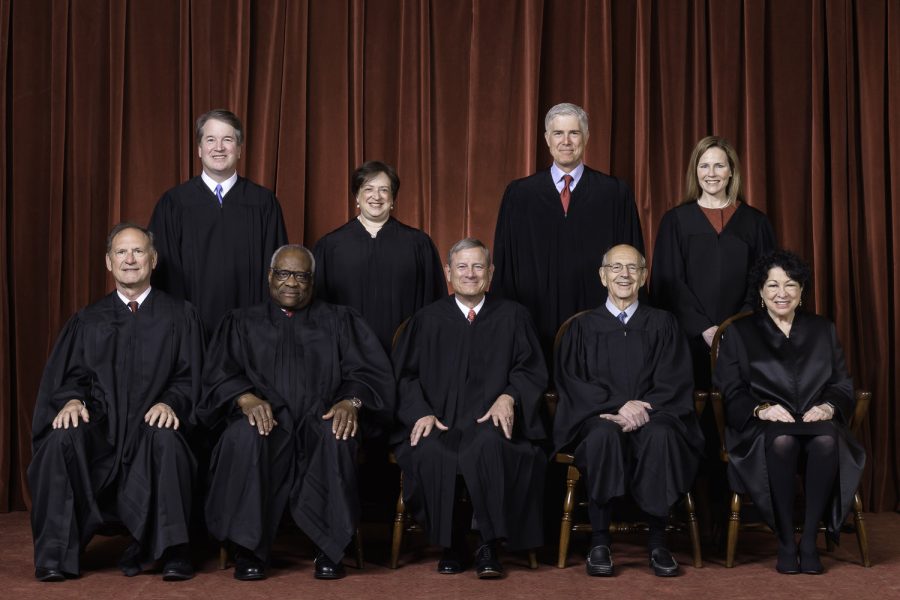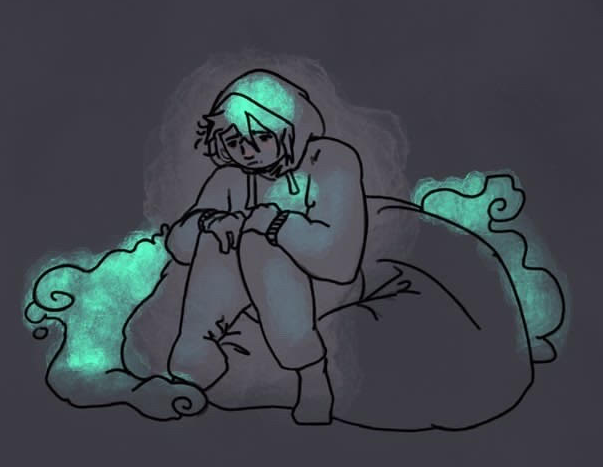The U.S. Without Roe
Photograph by Fred Schilling, Collection of the Supreme Court of the United States
The Roberts Court, April 23, 2021 Seated from left to right: Justices Samuel A. Alito, Jr. and Clarence Thomas, Chief Justice John G. Roberts, Jr., and Justices Stephen G. Breyer and Sonia Sotomayor. Standing from left to right: Justices Brett M. Kavanaugh, Elena Kagan, Neil M. Gorsuch, and Amy Coney Barrett.
February 15, 2022
On October 26, 2020, Amy Coney Barrett was confirmed as the Supreme Court’s latest Justice. Her appointment created a new “super-powered” conservative majority in the Supreme Court, with six of the Court’s Justices having been appointed by Republican presidents, and only three having been appointed by Democratic presidents. From the moment of Barrett’s confirmation, anti-abortion activists have been anxiously awaitng a decision which could arrive any day: when the Supreme Court overturns Roe v. Wade. But how did we get here? How did Republican become synonymous with pro-life? And what would the United States look like without Roe?
The fight over abortion restrictions in the U.S. has arguably lasted centuries. Before the Supreme Court ruled on abortion in 1973, laws on abortion were left up to individual states. By 1910, however, each state had a law against abortion during every stage of pregancy regardless of situation, unless a doctor recommended the termination of the pregnancy to save the patient’s life. The lack of access to abortion services meant that women who wanted abortions had to go underground to unqualified physicians who were willing to work illegally. In the U.S., these illegal abortions killed 2,700 women in the year 1930 alone.
This lack of access to legal abortion changed when Norma McCorvey (given the name Jane Roe to protect her identity) challenged Texas’ abortion law in 1971. Her suit was appealed to the Supreme Court, and after more than a year of argument, re-argument, and deliberation, the Court decided in a 7-2 decision that while states do have the responsibility to protect the “potentiality of human life,” the right to privacy guaranteed by the Constitution outweighed this interest, at least until the third trimester of a pregnancy.
These simple rules wouldn’t last long, though. In response to the seismic changes of Roe v. Wade, a new anti-abortion (or “pro-life”) movement in the U.S. sprouted out of largely Catholic and conservative Christian communities. They began making their case to the American public, changing minds by working with religious groups like the National Bishops Association and by publishing striking images of aborted fetuses to illustrate their views on abortion. They began making strong gains, with their largest strides being at the state level, which is no surprise. Republicans have been eagerly adopting pro-life policies since the 1980s, because they’re incredibly popular with their largely conservative and Christian voters.
Republicans’ views are important in abortion debate because their power in state lawmaking is unmatched. Republicans currently hold total control (meaning there are Republicans in the majority of both state legislatures and a Republican governor) in 23 states. In fact, more than 40% of Americans live in a state fully controlled by Republicans. Because so much discretion over abortion legislation has been left to the states by the Supreme Court, Republicans are free to push right to the limits of the Roe’s restrictions.
It’s within this context of constantly changing state-by-state restrictions and the newly conservative Supreme Court that a Mississippi law which fundamentally challenges the principles of Roe v. Wade is being considered. The Mississipi law bans abortions after 15 weeks of pregnancy, and similar laws have been passed in other states. Early interpretations of the trial and the Justices’ questions seem to imply that the law will be upheld, although specifics of the Court’s decision are still up in the air.
The Court could, for example, decide to limit abortion restrictions across the nation at 15 weeks, with states also being allowed to grant more time if they wish. This would mean that practically all of the 23 states fully controlled by Republicans would implement 15-week limits on abortions (this decision would be similar to many Eurpoean countries’ national abortion restrictions). As a “nuclear option,” the court could also decide to completely remove federal gurantees to abortion access, allowing all control to move to the states in a full reversal of Roe v. Wade. This option is generally considered unlikely, because the court rarely makes full reversals of their precedents, but with this highly conservative Court, members of which have ruled in favor of abortion restrictions before, a full reversal is more likely than at any point since Roe.
If this nuclear option is chosen, America’s abortion policy will become entirely polarized on a state-by-state basis. A dozen states (all of which are under complete Republican control) have already passed laws preparing for a Roe reversal, so-called “trigger” laws. These laws are somewhat of an oddity, because they didn’t do anything at the time they were written. The laws basically state that as soon as Roe v. Wade is overturned and abortion restrictions turn completely over to the states, their state will automatically implement a full ban on elective abortions. Other states, including Michigan, have pre-Roe abortion bans that would go into effect despite their decades of dormancy.
The effects of the nuclear option would be drastic. According to Caitlin Knowles Myers, an economist at Middlebury College who wrote a report on a post-Roe United States, legal abortion rates across the country would decline by at least 14% (this number is difficult to estimate because of advancing abortion technology and new clinics that may open by state borders). The effect would be most pronounced with women in the Southeast region of the country, who may need to travel across multiple states lines to have an abortion. Clinics, which are already swamped by women from states with strict abortion laws, will face even higher demand, meaning that many women simply will not have the chance to get an appointment. These women will either be forced to carry out their pregnancy to term, or turn to black market abortions which killed thousands in the pre-Roe era, a reality which many hoped we would never witness again.















